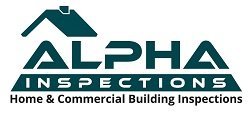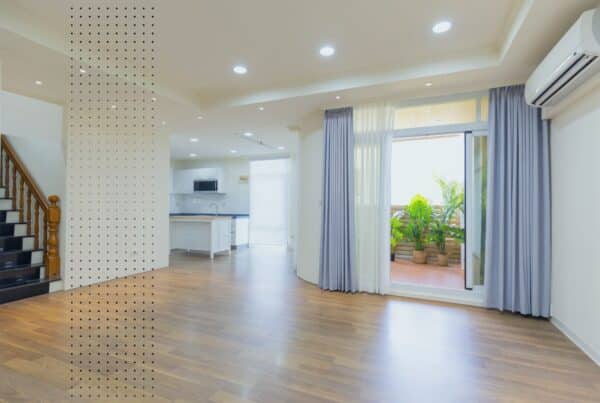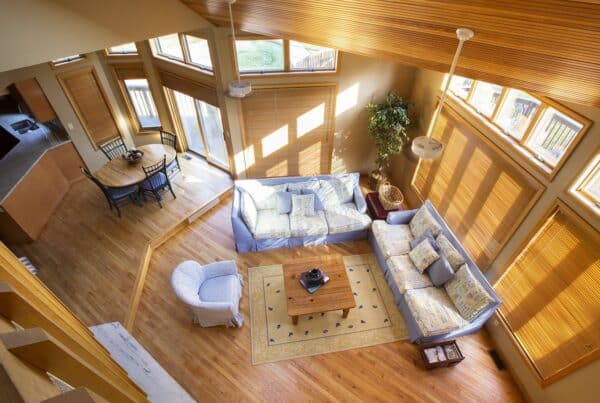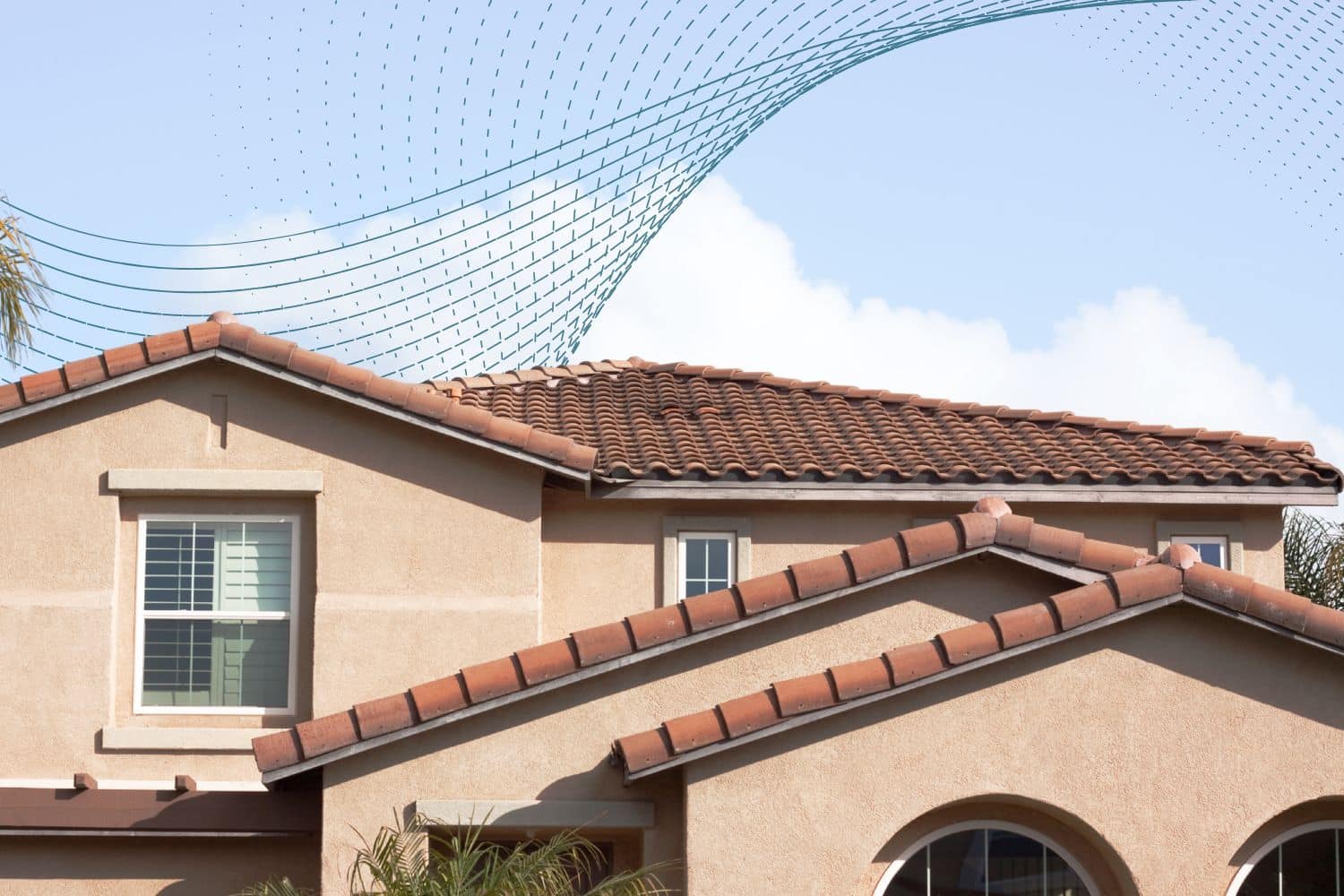
EIFS, short for Exterior Insulation and Finish Systems, is a siding option that has gained popularity for its clean look and energy-saving benefits.
From the street, it can be hard to tell whether an EIFS-clad home is in perfect shape or hiding problems under the surface. As inspectors, we know this system well.
If you own a home with EIFS or are considering buying one, understanding what it is, how it should be installed, and what can go wrong is the first step to protecting your investment.
What EIFS Is and How It Works
EIFS is a multi-layer exterior cladding system designed to insulate, protect, and decorate the outside of a building. A typical system includes:
- A weather barrier applied over the sheathing to keep moisture out
- An insulation board, usually made from expanded or extruded polystyrene
- A reinforced base coat with fiberglass mesh for strength
- A textured finish coat that provides color and style
Because the insulation board is continuous, EIFS can outperform traditional stucco and siding in energy efficiency. Builders also appreciate the design flexibility, as it can be shaped and finished in many ways.
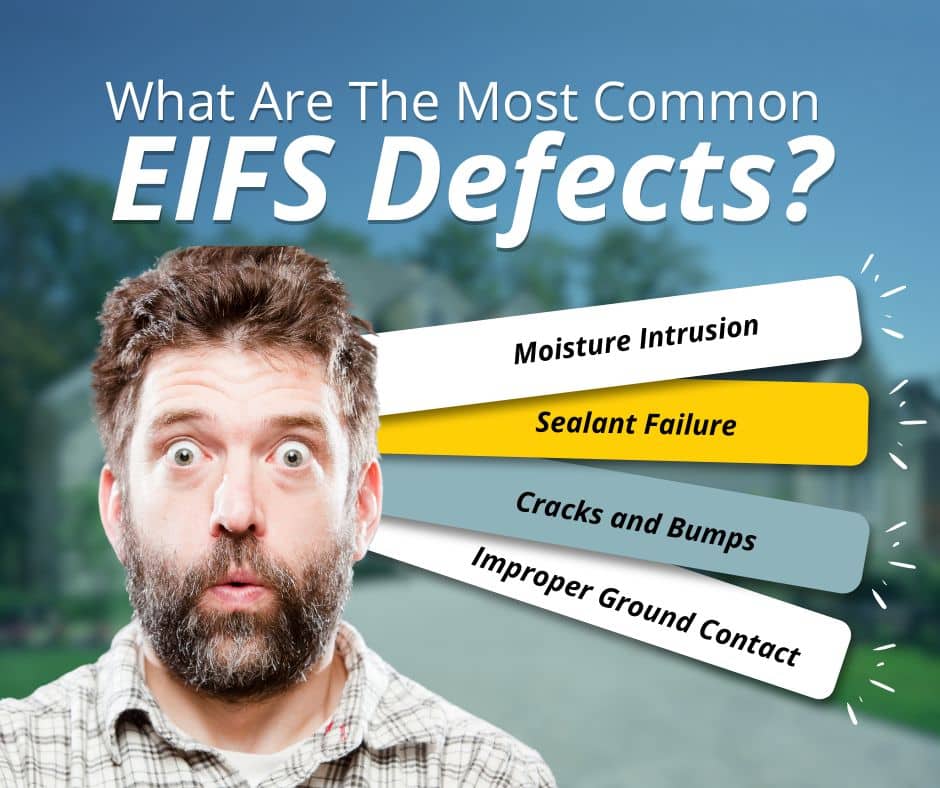
Two Main Types of EIFS Systems
Barrier EIFS is an older version that depends entirely on the outer finish to keep water out. If there is even a small failure in the seal, water can get behind the system.
With nowhere to go, that trapped moisture can cause rot, mold, and structural decay. In a study by North Carolina Building Research Program, up to 90% of barrier EIFS homes built in the 1990s showed some degree of moisture intrusion.
Drainage EIFS involves modern systems designed with a drainage gap between the insulation and the wall.
This allows any water that gets in to drain out before it causes damage. Even so, correct installation is critical, especially around windows, doors, and roof intersections.
What Tends To Go Wrong
Not every installation turns into a problem, but certain patterns show up again and again during inspections.
1) Moisture Intrusion
If water enters through gaps in flashing, failed sealant, or unprotected joints, it can stay trapped behind the insulation board. Over time, this leads to decay of the wall sheathing and framing.
2) Sealant Failure
Sealants have a limited life span. When they dry out or pull away from surfaces, they leave openings for water.
3) Cracking and Impact Damage
EIFS can crack due to settling, foundation movement, or hard impacts. Cracks are more than cosmetic; they can act as water entry points.
4) Improper Ground Contact
The material should never extend below grade or make direct contact with soil. Doing so invites water and insects into the system.
What Inspectors Look For
Evaluating EIFS takes a mix of trained observation and specialized tools. A thorough inspection includes a visual check, moisture testing, seal inspection, and drainage plane verification.
Let’s simplify each piece!
Initially, we look for visible issues, like stains, bulges, cracks, missing sealant, and signs of poor installation. Patterns like vertical streaking under windows can hint at moisture intrusion.
Then, using moisture meters, we check for elevated moisture levels in key areas such as window perimeters, door frames, and roof-to-wall junctions.
Next we check around chimneys, roof edges, and any material transitions. Flashing is crucial for keeping water out, but improper flashing installation is present in over 60% of investigated EIFS moisture failures. That makes it the single largest contributor to system breakdown.
Finally, for newer systems, we check that a proper drainage plane is in place behind exterior siding or cladding. The inspector will confirm that the gap exists, is unobstructed, and is likely to direct moisture away from the structure as intended.
Maintenance Tips for EIFS Homeowners
Even a well-installed system needs regular care. You can extend the life of EIFS by:
- Inspecting sealants every year and reapplying when needed
- Keeping sprinklers and landscaping from spraying water directly onto walls
- Making sure gutters and downspouts direct water away from the foundation
- Avoiding direct contact between soil and EIFS
- Repairing any cracks or holes as soon as you see them
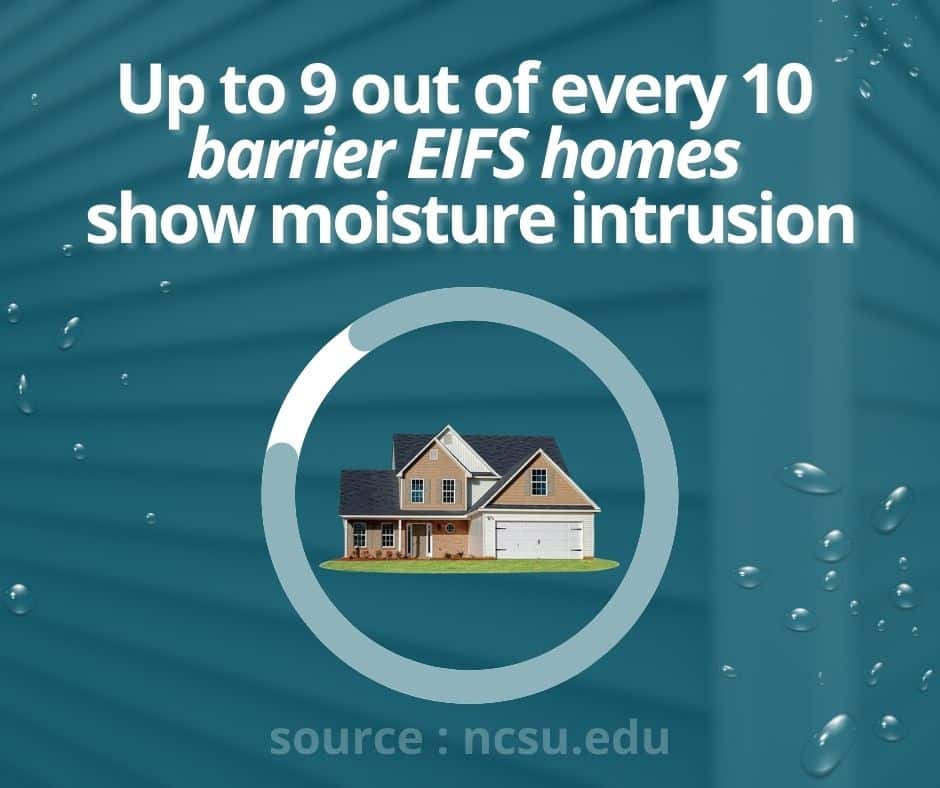
Common Questions About EIFS
Is EIFS the same as stucco?
No. While EIFS can look like stucco, stucco is cement-based and applied directly to a wall without insulation. EIFS is synthetic, with insulation and multiple layers.
Can EIFS be repaired?
Yes. Minor cracks or damaged areas can often be repaired without replacing the entire system. The key is catching problems early.
Does EIFS last as long as other siding materials?
With proper installation and maintenance, EIFS can last for decades. Neglect and poor installation are what shorten its life span.
When to Call a Professional
There are several times when bringing in an EIFS-experienced inspector is the smart move:
- Before buying a home: An inspection can reveal hidden moisture problems that are not visible to the naked eye.
- After major weather events: Heavy rain, wind, or hail can damage EIFS or compromise seals.
- If you notice stains, cracks, or bulges: These may be early signs of water intrusion or material failure.
- As part of routine maintenance: Periodic inspections can catch small issues before they require major repairs.
Choosing an inspector who understands EIFS is crucial. They know where installation mistakes tend to occur and how to use the right tools to confirm whether the system is performing as it should.
Conclusion
EIFS can be a great choice for exterior cladding when it is installed correctly and maintained regularly. It offers strong insulation, design flexibility, and an attractive finish. But like any building system, it has weaknesses that need to be monitored.
If you are buying, selling, or maintaining a home with EIFS, a professional inspection is the surest way to know what is happening behind the surface. Alpha Building Inspections has the expertise, tools, and experience to give you a clear picture of your home’s condition.
